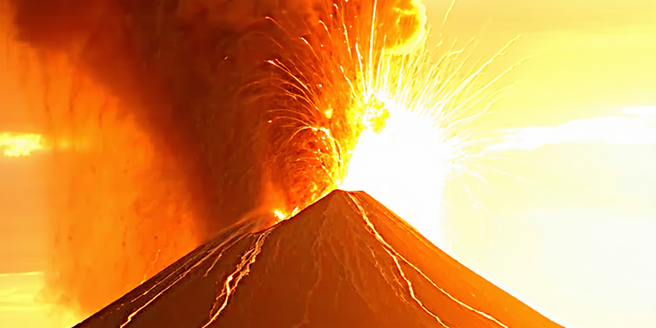
Understanding Volcanic Eruptions
Volcanic eruptions are fascinating yet dangerous natural phenomena that occur when magma from the Earth’s mantle escapes through the surface. This process involves explosive eruptions, lava flows, and release of volcanic gases. Understanding the types of eruptions—such as effusive and explosive—and the dynamics of magma ascent helps scientists predict potential hazards. The study of volcanic activity provides valuable insight into seismic tremors, ground deformations, and gas emissions, which act as indicators of impending eruptions. As plate tectonics play a vital role in volcanic activity, regions along tectonic boundaries, particularly the Ring of Fire, are more prone to such events. By exploring these mechanisms, researchers aim to mitigate risks associated with eruptions and enhance early warning systems for communities living in the vicinity of active volcanoes.
The Science Behind Volcanic Warnings
Volcanic warning systems are crucial for safeguarding lives and minimizing the impact of eruptions. These systems are developed through the study of a volcano’s historical activity, geological characteristics, and real-time monitoring data. Scientists utilize a range of tools, including seismographs, gas analyzers, and satellite imagery to detect changes in volcanic behavior. By analyzing seismic activity, ground deformation, and gas emissions, experts can craft models to predict imminent eruptions. Collaborative efforts between volcanologists, geologists, and emergency management agencies aim to convey concise warnings to the public. Effective communication ensures timely evacuations and response planning. Understanding the complexities behind these warning systems helps improve their accuracy and reliability, protecting communities from potential disasters caused by volcanic eruptions. Continuous research and advancements in technology are vital to refining these early warning mechanisms.
Historical Volcanic Eruption Cases
Throughout history, numerous volcanic eruptions have resulted in significant loss of life and property, offering valuable lessons for modern science. The eruption of Mount Vesuvius in A.D. 79 remains one of the most famous, having buried the city of Pompeii under volcanic ash. Similarly, the 1815 eruption of Mount Tambora in Indonesia triggered a climate anomaly known as the “Year Without a Summer,” highlighting the far-reaching effects volcanic activity can have. More recently, the 1980 eruption of Mount St. Helens in the United States provided pivotal insights into the processes of explosive eruptions. These historical cases underscore the importance of monitoring volcanic activity and implementing effective warning systems. By studying past events, scientists hope to improve prediction models, enhance public safety measures, and better prepare for future eruptions.
Technology Used in Monitoring Volcanoes
Advancements in technology have significantly enhanced our ability to monitor volcanoes and predict eruptions. Seismographs play a crucial role in detecting tremors and vibrations caused by magma movement. Satellite technology provides valuable data on thermal anomalies and ground deformation, aiding in the assessment of volcanic activity. Gas analyzers measure the emission of gases like sulfur dioxide, which can indicate an increase in volcanic activity. GPS systems track shifts in the Earth’s surface, providing real-time data on volcanic swelling or deflation. Furthermore, drones are increasingly used to capture high-resolution images and gather data from otherwise inaccessible areas. These technologies allow for continuous monitoring, enabling scientists to predict potential eruptions with greater accuracy. As technology continues to evolve, further innovations are anticipated, improving the effectiveness of volcanic early warning systems.
Impact of Eruptions on Local Communities
Volcanic eruptions can have devastating impacts on local communities, affecting lives, infrastructure, and the environment. The immediate threats include pyroclastic flows, ash fall, and lava flows, which can lead to loss of life and destruction of homes and roads. Ash clouds can disrupt air travel, leading to economic losses. Long-term impacts include agricultural damage due to ash-covered fields and contaminated water sources. Such events can result in displacement of populations and loss of livelihoods. Nevertheless, volcanic soil can become highly fertile, benefiting agriculture in the long run. Communities living near volcanoes must be prepared to respond to emergencies through proper evacuation plans and effective communication systems. By understanding the potential risks and impacts, communities can prioritize preparedness and resilience, ensuring safety and recovery in the face of volcanic threats.
Preparing for a Volcanic Eruption
Preparation is vital for minimizing the risks associated with volcanic eruptions. Communities in close proximity to active volcanoes should develop comprehensive emergency response plans that include evacuation routes, communication strategies, and resource distribution. Public awareness campaigns are essential in educating residents about recognizing warning signs and responding to alerts effectively. Stockpiling essential supplies such as food, water, masks, and protective clothing can improve resilience during an eruption. Partnerships between local authorities, scientists, and emergency organizations are crucial in coordinating timely evacuations and relief efforts. Additionally, community drills and education programs enhance readiness and ensure that individuals are aware of procedures to follow in the event of an eruption. By fostering a culture of preparedness, communities can mitigate the impacts of volcanic disasters, safeguarding lives and promoting swift recovery.
